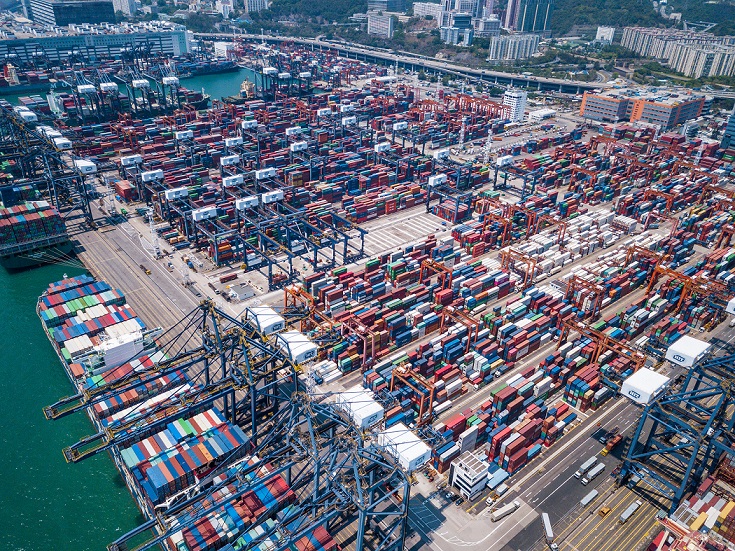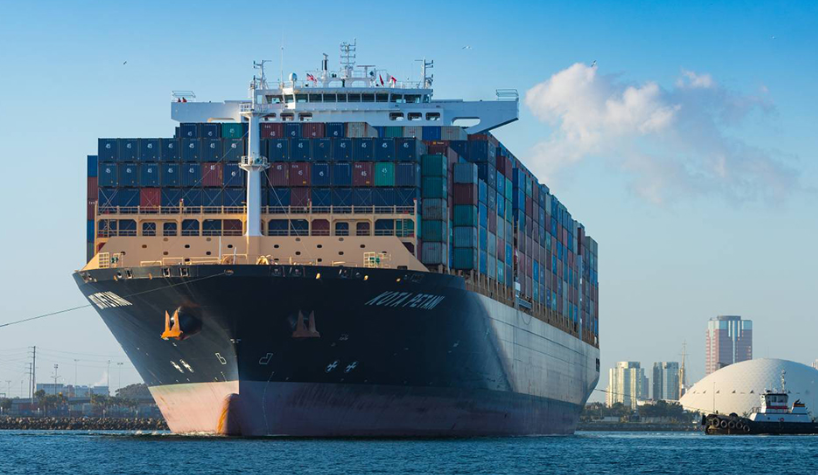Logistics
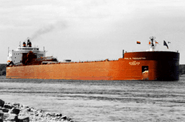
January 19, 2021
Great Lakes/St. Lawrence Shipments Resilient in 2020
Written by Sandy Williams
Tonnage on the Great Lakes-St. Lawrence Seaway system dropped just 1.7 percent during one of the most challenging years in recent history. Shipments on the water system, including commodities such as grain, iron ore and coal, totaled 37.7 million metric tons in 2020.
“The Seaway’s 62nd navigation season was one of the most remarkable in history,” said Craig H. Middlebrook, deputy administrator of the U.S. Great Lakes St. Lawrence Seaway Development Corporation. “Despite all the challenges throughout the year, it was one of the safest and smoothest seasons on record. The final tonnage results continue to demonstrate the resilience of the binational waterway and its ability to remain competitive in the global marketplace.”
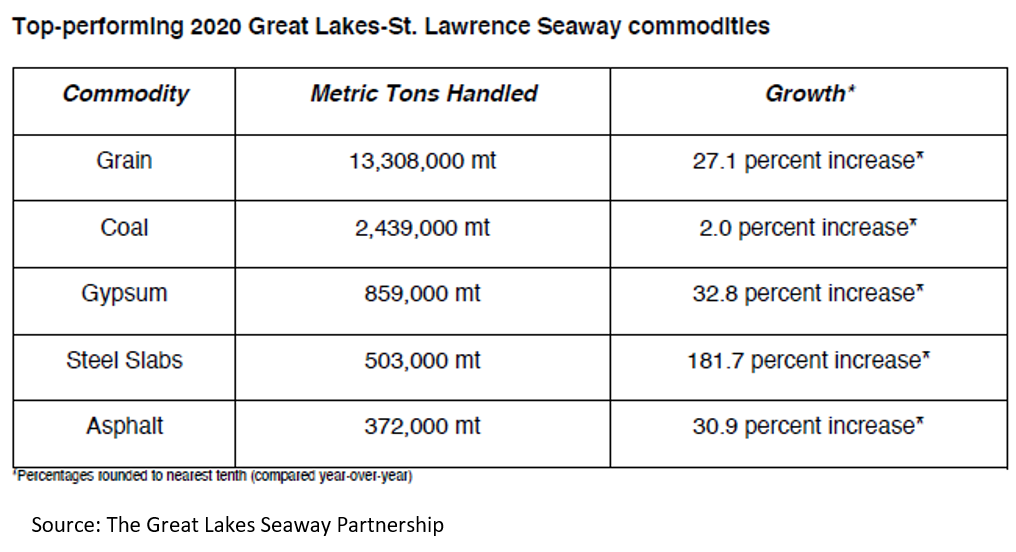
Iron ore shipments fell 22.9 percent in 2020 to 41.2 million tons as steel production was curtailed by automotive shutdowns early in the year. Compared to the five-year average, iron ore loadings dropped 21 percent. Steel slab shipments shot up by 181.7 percent to 503,000 MT.
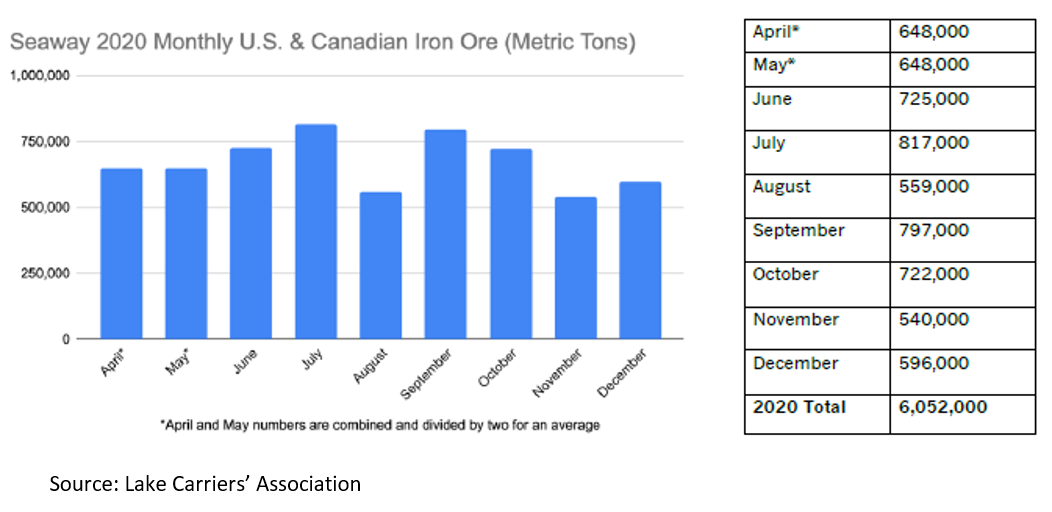 Wind cargo shipments were robust during the year with the Ports of Duluth-Superior and Indian-Burns Harbor reporting an uptick in cargo. The Port of Duluth broke its 2019 record with an increase of 219,000 freight tons of wind cargo in 2020. Burns Harbor reported 45 shipments, from overseas as well as domestic origins.
Wind cargo shipments were robust during the year with the Ports of Duluth-Superior and Indian-Burns Harbor reporting an uptick in cargo. The Port of Duluth broke its 2019 record with an increase of 219,000 freight tons of wind cargo in 2020. Burns Harbor reported 45 shipments, from overseas as well as domestic origins.
“Looking beyond the numbers, this port’s emergence as a wind cargo hub is an important win for cargo diversity and also for the expansion of renewable energy nationwide,” said Deb DeLuca, Executive Director of the Duluth Seaway Port Authority. “It’s been a difficult year under the cloud of a global pandemic, but this freight tonnage record is a much-appreciated highlight, made even better by the fact that Duluth Cargo Connect set records in consecutive seasons.”
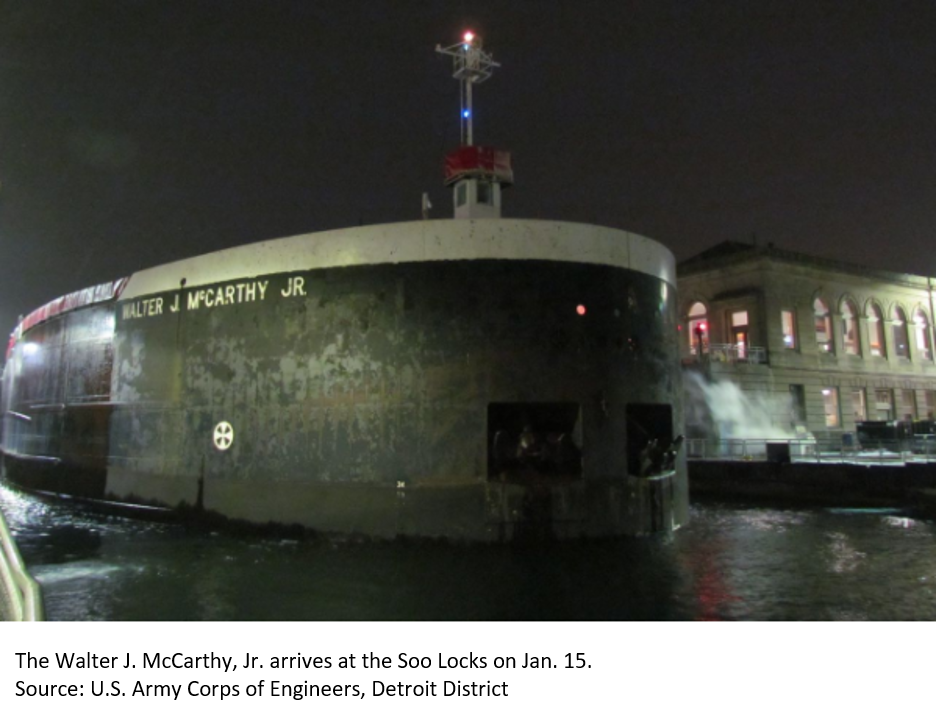
The Great Lakes shipping season officially closed on Saturday, Jan. 15, as the last freighter, the Walter J. McCarthy Jr., cleared the Soo Locks at 4:06 a.m. The 1,000-foot freighter, loaded with 70,107 tons of taconite, was headed to Gary, Ind., in its final run before winter layup. Shipping essentially halts for 10 weeks while the U.S. Army Corp of Engineers performs maintenance on lake infrastructure and ships are overhauled for the next season.




